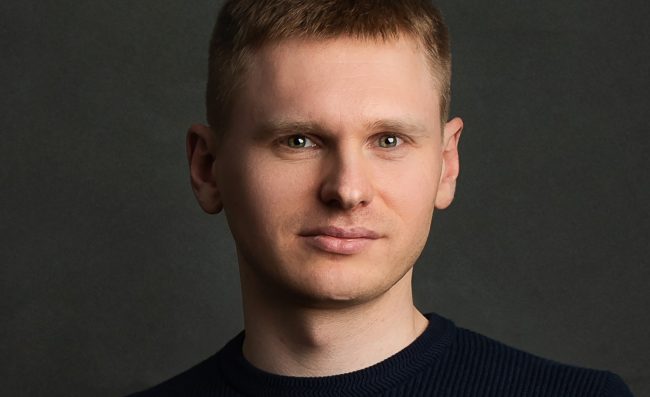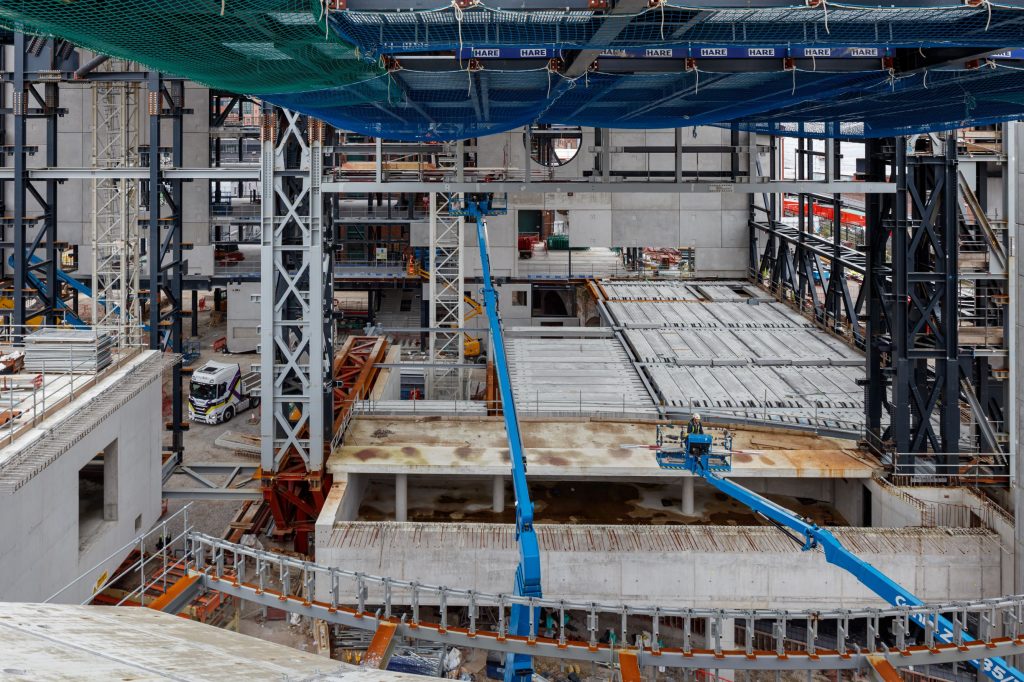Introducing... Photographer Pawel Paniczko

Introducing… Photographer Pawel Paniczko
We meet one of the photographers documenting work on The Factory, our future home in the heart of the city.
Manchester-based photographer Pawel Paniczko, whose digital colour photographs tell the story of the construction project, was born and raised in Bialystok, Poland. He moved to Manchester in 2006 where he discovered photography and in 2018 became the overall winner at the Architectural Photography Awards . He tells us what he looks for when photographing buildings and how he negotiates the challenges of shooting outdoors…

How did you get into photography?
Everything started with architecture, not photography. I used to study architecture back in Poland, but I left before I finished my studies. I lived in a not so small city, maybe 300,000 people, in a remote part of Poland – almost three quarters of the city were those classic Soviet blocks of flats.
I moved to Manchester in 2006 and after a couple of years I bought my first camera and started taking photographs. In the beginning I was just taking pictures here in Manchester but then I started to travel a lot, my main subject was always buildings.
Initially I would just photograph everything I saw, but I soon became more selective. Now I know you need to spend a lot of time with one building to observe how the light is changing and how people interact with the building.
I treat photography as an artistic medium – it is a way of expressing myself. I am an introverted person, but I try to show my feelings through photography. You can always spot something new about a building, even buildings you think you know very well, and I really love that discovering process.

What do you like about photographing in Manchester?
The first time I came to Manchester in 2006 it was a completely different place to what it is today. I love Salford Quays area and especially the Imperial War Museum. When I arrived it wasn’t developed like it is now – there was nothing, just car parks. I love the contrast between old and new, particularly all these old warehouses that are being developed.
I really love the Castlefield area – I used to live very close. Every time I walk to the city centre I pass The Factory. As The Factory grows I am looking forward to seeing how the new will interact with the old. I always try to show the context of a building not just the city but the people. The city is changing very quickly and I would like to capture some of these changes.

Can you describe your creative process when taking photographs?
I always try to create an image that replicates what I see. I never shoot in black and white – I think it’s more difficult to shoot in colour because all the colours need to work together. Post-processing usually takes at least the same time as taking the photographs. Just selecting images can be very time consuming, you need space and time. It is an artistic process.
I try to include people in my photographs – they show scale. Not many architectural photographers include people. This is because you are often using long exposures which does not work if people are moving, but with digital photography I’m able to get around this and I find it adds another dimension to my pictures.
What excites you about The Factory?
I have never witnessed a project like this from beginning to end. I am looking forward to the steel work being finished and being able to see the whole shape of the building. I hope that I will be able to get inside and give an impression of what these spaces will look like in the future.
I think The Factory could be an icon for the city. It is quite an unusual shape but also the way that the building has been designed is so interesting, the flexibility, with all its different possible configurations. And it is next to the water – I always think buildings look better next to water. And you will have sunset on the riverside. It will be a lovely place to be.
Culture is one of the most important things in people’s lives. This kind of building is really needed for people and will be important for Manchester. There are actually not that many buildings like this in the city right now. I think it is really needed.

What is your most memorable photography project to date?
My trip to China. One of the photos on this trip won best architectural photo of the year in 2018. This was special for me – not just this building but the whole trip. I spent the whole month in China, travelling from one city to another. I really like photographing cultural spaces because they are usually built to draw people in. Sometimes they are like icons of the city like the Opera House in Sydney for example. What I really loved about the Opera House in Harbin was how people could walk on the building. There are not many buildings like that where people can really use them entirely.

Harbin Opera House, Harbin, China, MAD Architects
What three things do you need to be an architectural photographer?
You cannot be an architectural photographer unless you are really interested in buildings.
You need to be patient – this is very important. Sometimes if the weather is not good you need to be on site for days.
And good planning – I am constantly checking the weather forecast! Blue skies are not always perfect for taking photographs, sometimes buildings look better in grey skies and heavy cloud. Some people only want perfect images but that’s not what I’m looking for – maybe that’s the Manchester influence?

The Factory is a world-class cultural space being developed in the heart of Manchester. Building on the success of MIF, it will commission and present the world’s most exciting artists, attracting up to 850,000 visitors a year.
Profile image credit: Anna Salek



